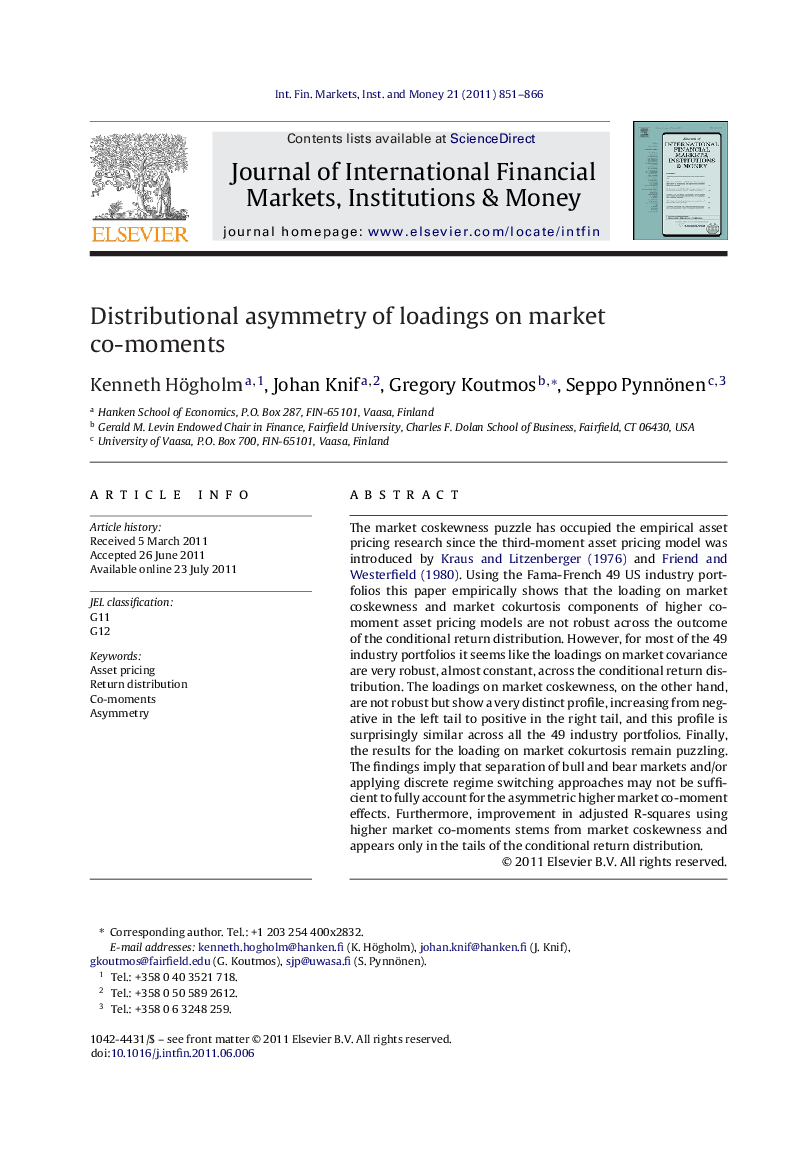| Article ID | Journal | Published Year | Pages | File Type |
|---|---|---|---|---|
| 963223 | Journal of International Financial Markets, Institutions and Money | 2011 | 16 Pages |
Abstract
The market coskewness puzzle has occupied the empirical asset pricing research since the third-moment asset pricing model was introduced by Kraus and Litzenberger (1976) and Friend and Westerfield (1980). Using the Fama-French 49 US industry portfolios this paper empirically shows that the loading on market coskewness and market cokurtosis components of higher co-moment asset pricing models are not robust across the outcome of the conditional return distribution. However, for most of the 49 industry portfolios it seems like the loadings on market covariance are very robust, almost constant, across the conditional return distribution. The loadings on market coskewness, on the other hand, are not robust but show a very distinct profile, increasing from negative in the left tail to positive in the right tail, and this profile is surprisingly similar across all the 49 industry portfolios. Finally, the results for the loading on market cokurtosis remain puzzling. The findings imply that separation of bull and bear markets and/or applying discrete regime switching approaches may not be sufficient to fully account for the asymmetric higher market co-moment effects. Furthermore, improvement in adjusted R-squares using higher market co-moments stems from market coskewness and appears only in the tails of the conditional return distribution.
Related Topics
Social Sciences and Humanities
Economics, Econometrics and Finance
Economics and Econometrics
Authors
Kenneth Högholm, Johan Knif, Gregory Koutmos, Seppo Pynnönen,
